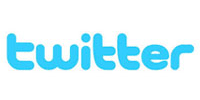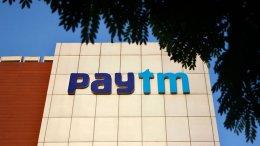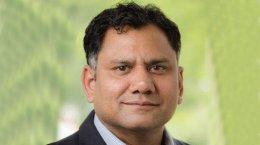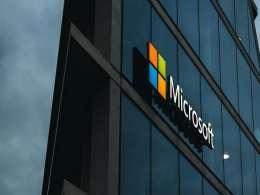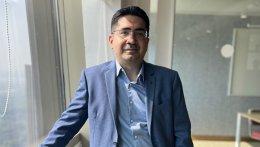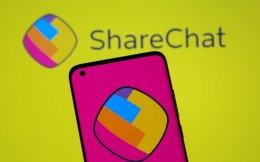Twitter Inc shares jumped 73 per cent in a frenzied trading debut that drove the seven-year-old company's market value to around $25 billion and evoked the heady days of the dot-com bubble.
The strong performance on Thursday is encouraging for the venture capitalists who have backed other consumer Web startups, such as Square or Pinterest, though it sounded alarm bells for some investors who cautioned that the froth was unwarranted.
"@twitter opening at $45/share? Almost 50x revenues! We are officially in another tech bubble," tweeted financier and investment advisor Steve Rattner.
The stock closed its first day of trade on the New York Stock Exchange at $44.90 a share after hitting a session-high of $50, nearly double the initial public offering price of $26 set late on Wednesday.
Twitter could raise $2.1 billion if an underwriters' over-allotment is exercised, as expected, making it the second largest Internet offering in the United States behind Facebook Inc's (FB.O) $16 billion IPO last year and ahead of Google Inc's 2004 IPO, according to Thomson Reuters data.
Fans believe that Twitter, which has 230 million users, has established itself as an indispensable Internet utility alongside Google and Facebook, and that it has only scratched the surface of its potential as a global advertising medium.
"When people use Twitter they are following certain people, they're searching for specific information," said Mark Mahaney, an analyst at RBC Capital Markets. "There are powerful marketing signals that are almost Google-esque, something that Facebook doesn't really have."
The IPO was shadowed for months by Facebook's troubled 2012 debut, in which the shares quickly fell below their offering price amid trading glitches and subjected the company and its lead banker, Morgan Stanley, to accusations that they had been greedy in pricing the deal.
Twitter's opening appeared to go off without a hitch, prompting Anthony Noto, the Goldman Sachs banker who led the IPO, to write a simple Tweet: "Phew!"
Still, Twitter may find itself subject to the opposite criticism, that it had priced the shares too low and left more than a billion dollars on the table.
"In my mind they certainly could've raised the price on this thing and gone into the low 30s," said Ken Polcari, director of the NYSE floor division at O'Neil Securities. "From an outsider looking in I would say they were overly cautious because they didn't want a disaster on their hands ... I'm sure the company didn't want a Facebook debacle, I get that, but I think they were overly cautious and it cost them some money."
The 70 million IPO shares represent about 13 per cent of the company's common shares. Twitter was the most actively traded stock on Thursday, with around 117 million shares changing hands.
Heavy demand for the IPO was apparent before the final pricing. Twitter was able to price the IPO above an already raised indicative range, and the deal still attracted investor subscriptions that totaled 30 times the number of shares on offer, according to market sources.
In San Francisco
At Twitter's headquarters in San Francisco, offices opened early and hundreds of employees flocked to the 9th floor cafeteria to watch the festivities on TV while eating "cronuts," a croissant-donut hybrid, made by Twitter's resident chef, Lance Holton.
The IPO is the latest milestone for a service that was born out of a nearly-defunct startup in 2006 and was derided by many in its early years as a silly fad dominated by people talking about what they had for breakfast.
But Twitter quickly began to penetrate popular culture in unexpected ways, with its open design and broadcasting format attracting celebrities, athletes, politicians and anybody who wanted to share short, punchy thoughts with a digital audience.
Its business potential developed more slowly, and the company appeared to be floundering as recently as three years ago, when it was riven by management turmoil and frequently crippled by service outages.
Under Dick Costolo, who took over as CEO in October 2010, Twitter has rapidly ramped up its money-making engine by selling "promoted tweets," messages from marketers that are distributed to a wide-ranging but targeted group of users. In the third quarter, Twitter had $168 million in revenue, it said, more than double from a year prior.
The NYSE, which snatched the listing away from its tech-focused rival, Nasdaq, marked Twitter's debut with an enormous banner with the company's blue bird logo along its Broad Street facade.
British actor Patrick Stewart, of Star Trek fame, rang the opening bell at the Big Board together with nine-year-old Vivienne Harr, who started a charity to end childhood slavery using the microblogging site.
"I guess I represent the poster boy for Twitter," Stewart said, adding that he had only been tweeting for about a year.
Costolo and Twitter's three co-founders - Evan Williams, Biz Stone and Jack Dorsey - appeared on the packed exchange floor to witness the beginning of trade.
At current valuations, the stakes owned by Williams and Dorsey would be worth around $2.7 billion and $1.1 billion, respectively. Costolo, who invested $25,000 in the fledgling company in 2007, holds a 1.4 per cent stake worth about $360 million.
Sell rating
Investor enthusiasm for the microblogging company defied traditional valuation analyses. The shares traded at about 22 times forecast 2014 sales, nearly double the multiple at social media rivals Facebook and LinkedIn Corp, even though Twitter is far from turning a profit and posted a loss of almost $70 million for its most recent quarter.
The hefty valuations were cause for celebration for Twitter insiders and venture capital backers, such as Union Square Ventures, Spark Capital and Benchmark Capital. But some analysts warned that a correction may be in store.
"With a price that pushes into the high 30s and beyond, Twitter is simply too expensive," Pivotal Research's Brian Wieser wrote in a note cutting his rating on the stock to "sell" from "buy".
"One way to justify a $45 price in our model would involve presuming that Twitter could generate more than $6bn in annual revenue by 2018. However, we think that would seem overly optimistic."
Fund managers who got small allocations at the IPO were hopeful the stock would trade down after Thursday's pop.
"We have a target of $40 and we won't buy more as long as it is trading above that," said Mark Hawtin, portfolio manager of the GAM Star Technology Strategy.
Jerry Jordan, manager of the $48.6 million Jordan Opportunity Fund, who got a small allocation, said he would buy more of Twitter if it trades down around $30-$35.
"A lot of these sexy IPOs have a big pop on the first day and then they grind sideways," Jordan said.
International growth
As Twitter's stock soared after the opening, the company's market value, including restricted share units and other securities that could be exercised in the coming months, was over $28 billion.
The company said in its investor prospectus that more than three-quarters of its users are outside the United States. Despite its early reputation as a hangout for Silicon Valley early adopters and tech geeks, some of its most active markets now include Japan, Indonesia, Brazil and Saudi Arabia.
The fast-moving, mobile service was credited with fueling popular protests that upended the Arab world in 2011. It served as a lifeline to the outside world for its users during natural disasters like Hurricane Sandy, and also instantly relayed news such as early rumblings of the 2011 U.S. raid on Osama bin Laden's compound in Pakistan.
"Twitter has, when coupled with the increasing distribution of smart phones and reach of the Internet, an impact on global connectivity and transparency," said P.J. Crowley, the former U.S. State Department spokesman. "It has definitely contributed to the acceleration of the news process and helped to expand the availability of information sources to a wide range of people."
The three most-followed accounts belong to a trio of pop stars: Katy Perry, Justin Bieber and Lady Gaga. U.S. President Barack Obama comes in fourth.
The 140-character messages have spawned an Internet culture of its own. The "hashtag," a pound symbol devised by early Twitter users to denote the topic of a conversation, has became ubiquitous, with the word even becoming an ironic expression parodied by the likes of "Saturday Night Live."
Twitter's successful debut is likely to stoke interest in other up-and-coming consumer Internet companies such as ride service Uber, scrapbooking site Pinterest, accommodation service Airbnb and the payment start-up Square, all of which boast private-market valuations well north of a billion dollars and could go public in the coming years.
Kevin Hartz, CEO of Eventbrite and an early investor in Pinterest and Airbnb, said the IPO floodgates might open now.
"The pendulum is swinging back in a surprising way," Hartz said. "There's a pent-up supply of a lot of quality companies."
Still, two early social media success stories, Groupon Inc and Zynga Inc, have suffered major reversals since going public. Groupon, despite big gains in its shares this year, still trades at less than half its 2011 IPO price. Zynga is worth about a third of its 2012 IPO price.
And first-generation social media firms such as MySpace have all but vanished as fickle users moved on to the next big thing.
Twitter's goal in IPO: to avoid becoming Facebook
As Twitter Inc's chief financial officer planned the company's initial public offering this year, he had one overriding goal: to avoid becoming the next Facebook Inc.
Twitter CFO Mike Gupta grilled banks about how to sidestep the problems that beset Facebook's IPO from start to finish, asking detailed questions about everything from how to pick an exchange to how to communicate with analysts.
"They were really information and data hogs," said one person who worked on the process. "They wanted a lot of different perspectives and to make sure that they did this right."
In the end, Twitter made different choices from its rival social networking site. Facebook selected Morgan Stanley as its lead underwriter, while Twitter picked Goldman Sachs. Facebook listed on Nasdaq, where trading glitches marred the initial hours of trading, while Twitter listed on the New York Stock Exchange.
Twitter made sure its shares were sold for a low enough price to attract strong interest and keep shares high in their early days of trading, after Facebook's shares dropped in the days after its IPO.
Bankers said Gupta and Twitter's director of investor relations Nils Erdmann also looked closely at what worked - and what did not - for other Internet companies that went public, including Pandora Media Inc, Zynga Inc and LinkedIn Corp.
A key player in the IPO was Goldman's lead Twitter banker, Anthony Noto. The New York-based Noto was a former top ranked equity research analyst who left Goldman in 2008 to serve as an executive for the National Football League. He rejoined the firm just two years later to serve as the co-head of global technology, media and telecom investment banking.
Noto has built the team into the number one U.S. underwriter for tech IPOs so far this year, over Morgan Stanley and rival banker Michael Grimes who led the Facebook IPO, as well as other high profile deals including Google and LinkedIn.
Goldman has taken over 16 technology companies public since January, including software darling Tableau Software Inc. For the same period last year Goldman was fifth, according to Thomson Reuters data.
Those that have worked with Noto praise his low-key, no-nonsense style.
"Every banker talks about wanting to build a relationship but after you do a deal with them, you are dropped like yesterday's newspaper," said Ed DiMaria, the chief financial officer of Bankrate Inc who first worked with Noto when he helped take his company public in June 2011. "With Anthony, it's not about getting paid or the next deal - it's about the relationship and how he can be helpful to the company."
Twitter could not be reached for immediate comment. Goldman Sachs and Morgan Stanley declined to comment.
Taking rivals by surprise
Goldman quietly began working with Twitter in May, helping the company to draft its S-1 registration statement and submit it confidentially to regulators. News in late August that the company's IPO was already underway caught most other investment banks by surprise.
There was no formal pitch process to fill out the rest of the syndicate, bankers said, as other banks - Morgan Stanley, JPMorgan, Bank of America and Deutsche Bank - were approached by the company and told that they needed a credit commitment if they wanted to be part of the deal.
The company delved into areas many companies rarely consider, including how its shares should be allocated among the underwriters, and whether overpricing or underpricing a deal would hurt its brand.
Noto and his team were loath to take any risks that would jeopardize the deal such as putting too many shares in the hands of retail investors that would flip the stock on the first day of trading.
In the end, Noto got his wish as half of the 70 million shares that Twitter sold during the IPO ended up in the hands of large long-term holders.
Twitter decided to price its IPO at $26, a relatively conservative figure as underwriters were weighing pricing the deal at as high as $28, according to investors. But underwriters decided that it made sense to price the deal at a lower point and leave room for a larger first day pop rather than follow in Facebook's footsteps even if it meant leaving more than $1 billion on the table.
Facebook, which priced its deal at $38, saw underwriters battle to keep its shares from dipping below the IPO price on the first day of trading. The shares continued to drop to fall as low as $17.55 in the months following the company's public debut. It took over a year for the stock to recover.
